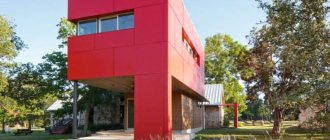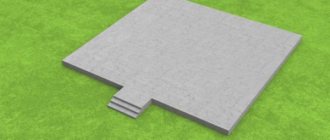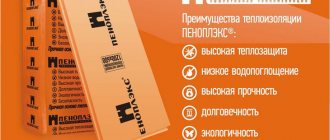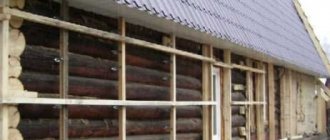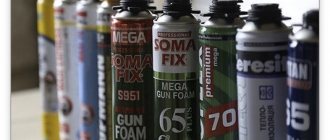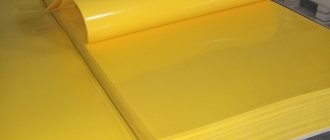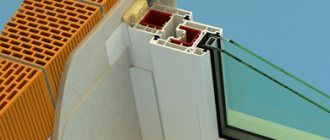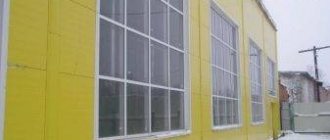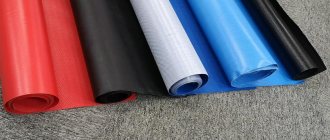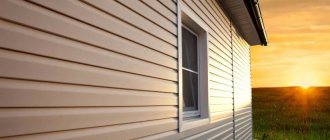Oriented strand boards have increased strength, which is ensured by a multilayer structure with different directions of chips. Relatively low weight is combined with flexibility, which makes this material one of the most popular in the construction and repair industry and furniture production. OSB boards are produced in accordance with the GOST 32567-2013 standard, imported products, respectively, - EN 300:2006 “Oriented Strand Boards (OSB) - Definitions, classification and specifications”, NEQ.
The operational properties of OSB depend on the main parameters: dimensions, weight, density. We will consider each of the characteristics - the dimensions of the OSB board, the scope of application.
How to make
For the production of OSB, thin-sized coniferous wood is needed. Large shavings and wood chips are glued together using various resins at high temperatures. By the way, OSB is visually easy to distinguish from other building materials precisely because of the large and long shavings, which are strictly oriented in different parts of the slab. In the outer layers it is located longitudinally, and inside the slab - transversely.
The high quality of this compound is ensured by synthetic wax, and the ideal protective characteristics are provided by boric acid salts. OSB boards do not have defects characteristic of wood products: voids, air pockets from knots, etc. Everything here is strong and reliable.
Classes according to STB EN 300
In accordance with the requirements of STB EN 300, there are four classes of OSB boards:
- OSB-1 - general purpose boards used in furniture production when used in dry conditions (non-moisture resistant boards);
- OSB-2 is a general purpose board used in load-bearing panels under temperature and humidity conditions corresponding to service class 1, established in TKP EN 1995-1-1. Increased mechanical strength and low moisture resistance;
- OSB-3 - slabs of load-bearing frame panels for wet environments under temperature and humidity conditions corresponding to service classes 1 and 2, established in TKP EN 1995-1-1. High mechanical strength and resistance to moisture;
- OSB-4 - slabs of load-bearing frame panels for harsh operating conditions under temperature and humidity conditions corresponding to service classes 1 and 2, established in TKP EN 1995-1-1.
Use in construction
Figure 1. A house made of OSB plywood is installed quickly and is not expensive
Ease of installation work, moisture resistance, mechanical strength, perfectly flat surface and low weight at a relatively low cost make this material very popular in construction work. It is widely used both for renovation of apartments and office premises, and in private construction. Many private owners, having bought a country plot, begin its arrangement by constructing a temporary building using OSB, since it is fast, convenient and inexpensive (Fig. 1).
The main areas of application of OSB in construction include:
Construction of internal partitions. Depending on the operating conditions, plywood of class OSB 2 or more moisture-resistant (OSB 3) can be used. The use of a material that is more resistant to moisture will allow it to be painted using water-based substances in the future. Installation of external partitions. In this case, it is assumed that only OSB 3 plywood will be used, the surface of which must be carefully sealed and primed
At the same time, you need to know that the most vulnerable part of the slabs are the edges, so their processing should be treated with special attention. Installation of floors. OSB boards can be laid directly on a concrete screed or used as a rough covering over open ground
Such a floor can later be tiled, laminate, covered with linoleum or varnish. Construction of frame houses from sandwich panels. This is a new technology with which you can build any structures from ready-made blocks, which use OSB boards. They are a reliable design consisting of 2 elements, between which insulation is pressed. Furniture manufacture. Various elements of upholstered and cabinet furniture are made from OSB plywood. The only limitation that is imposed on such a product is the lack of direct contact with water. Design of containers. Cladding of cargo vehicle interiors: cars, ships, trains, etc.
Yesterday and today
The first OSB board was manufactured more than thirty years ago in Canada, and then began to be produced in the Soviet Union. At one of the Belarusian enterprises, a workshop was built that launched serial production of oriented strand boards.
Today, the main OSB production facilities are located in Canada and the USA. Among European exporters, Austria, Germany and Latvia are considered the largest.
The slabs are also produced in the Middle Kingdom. However, the quality of Chinese OSB is significantly inferior to both American and European models. The reason is that the Chinese use poplar for the production of slabs, which is inferior in its characteristics to coniferous species.
In recent years, OSB production has been established in Russia.
A special line has come into operation at the Novovyatsky ski plant in Kirov, where OSB boards have been produced since October 2012. In June 2013, the first large plant in Russia for the production of OSB boards was officially opened by DOK Kalevala. After the commissioning of the second stage, the plant’s capacity increased to 600 thousand m3 of products per year.
For many Russian consumers, such facts inspire optimism, since domestic products are cheaper and are practically not inferior in quality to well-known brands. Among those that are popular today in Russia : Georgia Pacific, Glunz, Ainsworth, LP, Kronospan and others.
Floor slabs: product features and material use
OSB flooring board is a popular finishing building material, for the production of which waste from the woodworking industry is used:
- wood chips obtained from processing aspen trunks;
- shavings formed when sawing coniferous trees.
The composition of the slabs, along with chips, includes the following materials:
- wax filler obtained as a result of a synthetic reaction;
- moisture-resistant resins based on phenol and formaldehyde components.
The minimum size of wood chip filler is 60 mm, and the maximum is 90 mm.
OSB (oriented strand board) is a material successfully used in construction and furniture manufacturing
When making panels, wood chips are laid in several layers, each of which differs in the orientation of the wood fragments:
- The outer layers of the product are characterized by a longitudinal arrangement of fragments of wood shavings;
- A distinctive feature of the internal layers is the transverse placement of the chip fraction.
The production of plates is carried out under conditions of elevated temperature and also at high pressure. Chips impregnated with moisture-resistant resins are pressed using special equipment. The result is a slab having the required dimensions. The material's strength characteristics are superior to chipboards and plywood sheets. Increased flexibility of the panels is achieved due to the mutually perpendicular orientation of the wood chips. Modern manufacturing technology, laboratory control and reliable equipment guarantee the quality of the floor slabs.
The thickness of the material, which has an increased safety margin, allows you to form a reliable basis for finishing the floor with the following coatings:
- ceramic tiles;
- parquet boards;
- carpet;
- various types of linoleum;
- moisture resistant laminate.
OSB slabs for flooring are a type of finishing building material, which is characterized by a regular rectangular shape. The panels have fixed dimensions and are also characterized by the absence of cracks and local defects.
OSB differs in the thickness and grade of the material, depending on the size of the raw materials, density and quality of the resins used, which affect moisture resistanceOriented strand panels solve a range of problems:
- form a flat surface of the floor base mounted on wooden beams;
- compensate for differences in height of reinforced concrete and wooden bases for laying finishing;
- create a comfortable temperature in living spaces by laying thermal insulation between the sheets and the base surface;
- prevent street noise from entering the room due to the multilayer structure of the material;
- reliably isolated from the penetration of moisture entering through the capillary channels of the concrete mass.
The area of use of the material differs for different types of products:
- OSB-1 boards, characterized by a low price, have increased hygroscopicity and insufficiently high strength. They are intended for use as a finishing material. Sheet cladding is used in rooms with low moisture concentration;
- OSB-2 panels have an increased safety margin and are less hygroscopic than OSB-1 boards. The products are able to withstand increased loads and are used for interior cladding of floors, walls and ceilings in dry rooms, as well as in the production of furniture;
- OSB-3 brand products are designed for use in high humidity environments and have high strength characteristics. Panels marked OSB-3 are used for finishing activities carried out indoors and outdoors;
- Products marked OSB-4 have proven themselves in structures that can withstand increased loads. OSB-4 boards are used if protection of the external surface of loaded structures is necessary. The panels are characterized by increased moisture resistance and maximum strength.
For floor coverings, manufacturers produce slabs with a tongue-and-groove edge, which ensure a tighter fit of the slabs to each other. When deciding which sheets should be used to finish the floor, you should study the performance characteristics of the slabs, as well as take into account specific operating conditions. Experts recommend using class three (OSB-3) products to form the floor surface, which maintain integrity when exposed to forces from furniture, equipment, interior items and moving people.
Resins and final product quality
Resins play an important role in the manufacturing process of OSB boards. The quality of the final product depends on how correctly the brand of resin is selected and integrated into the technology.
Various types of resins are used for the outer and inner layers of the board. Their concentration ranges from 11 to 15% of the total mass.
One of the serious problems is the high toxicity of resins. Unfortunately, they emit harmful components into the atmosphere such as formaldehyde, methanol, and phenol.
Ordinary material
And now for the plywood sheets. They are canvases of different sizes, which consist of knitted small peeled wood veneer. Birch is usually chosen as the basis for such veneer. Again, plywood is initially completely harmless. But the veneer in the sheets cannot be unconnected. Here again the already known phenol and formaldehyde resins are used.
Security groups
Advantages and disadvantages of plywood.
But, unlike OSB boards, plywood has a slightly different degree of environmental friendliness and its own subtleties
It is also important to take into account that today the World Health Organization has identified 3 main groups of environmental safety of plywood, which are characterized by the letter “E”. Next to this letter there is a number from 0 to 2, depending on the degree of environmental friendliness of this type of sheet.
As a rule, the auxiliary binder in plywood is methanol. It to some extent increases the same characteristics of formaldehyde. But at the same time, due to this formaldehyde, a significantly smaller amount is required for binding. That is, these materials seem to mutually compensate for each other’s harmfulness.
And yet there is a degree of harm. Therefore, it is advisable to consider in more detail the main types of plywood based on their three levels of environmental safety according to the “E” quality standard. So let's get started.
Comparative table of performance characteristics of wood-based panel materials.
E0 type plywood contains less than 6 mg of formaldehyde-type binder resins. The optimal permissible content for this category is 6. This means that 100 g of clean dry plywood sheet contains 6 mg of harmful resins.
But the main catch is that this type of plywood has been produced quite poorly lately, so you can’t buy it everywhere and not always. The explanation for this is the insufficiently high functional characteristics of the material.
The second type of plywood for environmental safety is E1. Here, according to standards, the content of harmful resin is from 7 to 9 mg per 100 g of clean dry sheet material. But such plywood is produced only in some countries of Western Europe, so there is also no wide access to it.
And finally, the third type is E2 class plywood. The resin content ranges from 10 to 20 mg per 100 g of material. Such sheets are already being produced en masse in almost all developed countries. But, accordingly, the harmfulness of this plywood will also be slightly higher.
Fire safety
Advantages and disadvantages of OSB.
It makes sense to consider another important parameter – flammability class. Not only the degree of release of toxins into the room, but also fire safety will depend on this
As a rule, today the most common type of plywood produced is G4 flammability class. This is a completely combustible material that releases all toxins into the air when burned.
But if you look hard enough, you can also find G2 type sheets on the market. They have a higher degree of fire safety. And during combustion, accordingly, they do not emit such amounts of harmful substances. Therefore, if we take into account all the factors, then it is necessary to give preference to G2 class plywood. After all, at the same time, such a material will emit much less harm into the air, even when exposed to sunlight.
As a conclusion, it must be said that even despite these classes, not a single type of plywood is one that can be safely used for interior work in residential premises. The explanation for this is quite simple - an increase in the release of toxins harmful to the body several times with even a slight increase in ambient temperature or an increase in humidity in some cases.
And the use of G2 and E1 plywood for domestic purposes at the same time will make it possible to minimize the release of toxins into the air. At the same time, there is a possibility that you will not feel this harm indoors, therefore, the harm to your health will be less.
So, the main environmental characteristics of plywood and OSB boards have been reviewed. The bottom line is that it is not recommended to use either one or the other for residential premises. But if such a need arises - plywood or OSB - then it is better to choose ordinary non-moisture resistant plywood, since it is more environmentally friendly.
Main dimensions of OSB sheet
| Nominal thickness of OSB, mm | OSB board dimensions | |||||
| 2440x1220 mm | 2500x1250 mm | |||||
| Sheets per pack | Sheet weight, kg | Pack weight, kg | Sheets per pack | Sheet weight, kg | Pack weight, kg | |
| 6 | 140 | 11,6 | 1625 | 140 | 12,2 | 1705 |
| 9 | 92 | 17,4 | 1600 | 92 | 18,3 | 1680 |
| 9,5 | 83 | 18,4 | 1525 | 83 | 19,3 | 1600 |
| 11 | 70 | 21,3 | 1490 | 70 | 22,3 | 1565 |
| 12 | 64 | 23,2 | 1485 | 64 | 24,4 | 1560 |
| 15 | 54 | 29 | 1570 | 54 | 30,5 | 1645 |
| 18 | 47 | 34,8 | 1640 | 47 | 36,6 | 1720 |
| 22 | 40 | 42,6 | 1700 | 40 | 44,7 | 1790 |
As a rule, OSB board consists of three or four layers, two of which are external. Modern technologies make it possible to produce slabs of almost any size, but in practice the following standards are mainly used:
- 1220×2440 mm
- 1220×3660 mm
- 1250×2500 mm
- 1250×3700 mm
- 1250×6000 mm
OSB VS Chipboard
OSB boards were created primarily in order to compete with chipboards (chipboards) as a more modern and high-quality product. And we managed to achieve this. OSB has physical and mechanical characteristics that are almost three times higher than those of wood-shaving structures.
Prices for OSB board
| Product name | Thickness, mm | Wood type | Surface treatment method | The price of the product |
| OSB board 8 mm (OSB/OSB) 1250x2500 mm | 8 | needles (spruce, pine) | smooth | RUB 1,300.00 |
| OSB board 9 mm (OSB/OSB) 1220x2440 mm | 9 | needles (spruce, pine) | smooth | RUB 750.00 |
| OSB board 9 mm (OSB/OSB) 1250x2500 mm | 9 | needles (spruce, pine) | smooth | RUB 780.00 |
| OSB board 12 mm (OSB/OSB) 1220x2440 mm | 12 | needles (spruce, pine) | smooth | RUR 880.00 |
| OSB board 12 mm (OSB/OSB) 1250x2500 mm | 12 | needles (spruce, pine) | smooth | RUB 950.00 |
| OSB board 15 mm (OSB/OSB) 1220x2440 mm | 15 | needles (spruce, pine) | smooth | RUB 1,700.00 |
| OSB board 15 mm (OSB/OSB) 1250x2500 mm | 15 | needles (spruce, pine) | smooth | RUB 1,300.00 |
| OSB board 18 mm (OSB/OSB) 1220x2440 mm | 18 | needles (spruce, pine) | smooth | RUB 1,900.00 |
| OSB board 18 mm (OSB/OSB) 1250x2500 mm | 18 | needles (spruce, pine) | smooth | RUB 1,500.00 |
| OSB board 22 mm (OSB/OSB) 1220x2440 mm | 22 | needles (spruce, pine) | smooth | RUB 2,000.00 |
| OSB board 22 mm (OSB/OSB) 1250x2500 mm | 22 | needles (spruce, pine) | smooth | RUB 2,000.00 |
Table of evaluation characteristics of wood-based panels
| Characteristics | OSB | Hardwood plywood | Softwood plywood | MDF | Chipboard |
| Appearance (decorative qualities) | 5 | 3 | 3 | 3 | 3 |
| Elasticity indicators | 5 | 4 | 4 | 2 | 2 |
| Flexural strength | 4 | 4 | 4 | 2 | 1 |
| Recommendations for use for outdoor work | 4 | 2 | 3 | 1 | 1 |
| Dimensional stability (length, width, sheet thickness) | 5 | 3,5 | 3,5 | 2 | 2 |
| Average? weight 1 m3 | 3 | 3 | 4 | 2 | 1 |
| Fastening with nails (force depending on wood density) | 3 | 4 | 4 | 2 | 4 |
| Screw fastening strength | 5 | 3 | 3 | 3 | 3 |
| Ease of use with hand and power tools | 5 | 4 | 3 | 3 | 4 |
| Presence of external and internal defects (delamination, knots, voids) | 5 | 3,5 | 3,5 | 5 | 5 |
| Can be used for painting (varnish, plaster) – with pre-treatment | 3 | 4 | 4 | 4 | 4 |
| General assessment of useful qualities | 47 | 36 | 39 | 29 | 30 |
| Average cost of 1 m2 / rub. | 143 | 110 | 135 | 144 | 87 |
Dimensions of OSB boards
The dimensions of general construction OSB panels are considered standard: 1220X2440 mm (American version) and 1250X2500 mm (European version). Products with lengths of 3000 mm and 3150 mm are also available for sale; slabs with a length of more than 7 meters are produced upon request. The width of manufactured OSB can reach 2.5 meters; sometimes retail outlets sell panels with a width of 625 mm that are easy to transport.
If you have a choice, then you should prefer OSB with a larger size. There is a written rule that says that it is better to get rid of “extra” joints, even if the cutting is not entirely advantageous. For example, when covering the walls of a frame house, it is highly desirable that the OSB sheet covers the height of the entire floor. As a result, the design is more reliable, and the costs of possible trimming are recouped by the absence of support jumpers that are placed under the joints.
Rafter spacing and slab thickness
| Rafter pitch, mm | OSB-3 thickness, mm | Thickness of FSF plywood, mm | Board thickness, mm |
| 300 | 9 | 9 | — |
| 600 | 12 | 12 | 20 |
| 900 | 18 | 18 | 23 |
| 1200 | 21 | 21 | 30 |
| 1500 | 27 | 27 | 37 |
Advantages and disadvantages
Other positive properties of OSB include:
- Uniformity of the structure and its high strength.
- Moisture resistance, due to which the oriented strand board does not lose its properties even after being in water for a day.
- OSB boards are very easy to process, glue and paint.
- They hold screws and nails securely.
- Various defects (voids, delaminations, knots) are practically never encountered.
- OSB boards cannot be damaged by insects.
The undoubted advantages of this material include its low price, attractive wood-like appearance, and relatively light weight of the slab. This is especially important when working at height: you can do without cranes, blocks and scaffolding.
OSB boards have few disadvantages, although there is one significant one, which has already been mentioned - the high content of formaldehyde and other toxic materials in some brands of products. For this reason, the USSR Ministry of Health at one time banned the production of slabs on the territory of the state. But this is already a fact of history.
Application area
The properties of OSB allow this material to be used as a construction or finishing material. Here are the types of work it can be used for:
- Covering frames and walls inside and out.
- Leveling the floor and ceiling.
- Laying rough or finished floors along joists.
- Removable formwork when working with concrete.
- Continuous sheathing for bitumen shingles, metal tiles, slate, soft roofing materials.
- Production of SIP panels and thermal panels.
There is constant debate among developers about how safe OSB board is. Its production uses resins that emit formaldehyde. Manufacturers claim that the release of this substance does not exceed 1%. Materials with such formaldehyde emissions are considered absolutely safe. Wood releases approximately the same amount of this substance. Therefore, such materials are allowed for the construction of children's furniture. In addition, OSB boards with emissions of 0.5% appeared. They can be distinguished by two criteria: the name contains the prefix Bio or Green and they are more expensive.
OSB board has a wide range of applications
Please note that the level of formaldehyde emission must be controlled. Each batch of material must be checked and the actual parameters indicated in the accompanying documents. Despite all the arguments, not everyone considers this material safe, preferring to use natural material - boards. They are, without a doubt, an environmentally friendly material, but the boards take longer to work with and are more expensive. In general, everyone decides for themselves whether to use OSB boards or not.
Mechanical properties according to EN 300 standard
| Characteristics | Test method | Plate thickness, mm | OSB-1 | OSB-2 | OSB-3 | OSB-4 |
| Bending strength – major axis, N/mm2 | EN 310 | from 6 to 10 | 20 | 22 | 22 | 30 |
| > 10 and < 18 | 18 | 20 | 20 | 28 | ||
| 18 to 25 | 16 | 18 | 18 | 26 | ||
| Bending strength – lateral axis, N/mm2 | EN 310 | from 6 to 10 | 10 | 11 | 11 | 16 |
| > 10 and < 18 | 9 | 10 | 10 | 15 | ||
| 18 to 25 | 8 | 9 | 9 | 14 | ||
| Modulus of elasticity – main axis, N/mm2 | EN 310 | from 6 to 10 | 2500 | 3500 | 3500 | 4800 |
| > 10 and < 18 | ||||||
| 18 to 25 | ||||||
| Modulus of elasticity – lateral axis, N/mm2 | EN 310 | from 6 to 10 | 1200 | 1400 | 1400 | 1900 |
| > 10 and < 18 | ||||||
| 18 to 25 | ||||||
| Tensile strength perpendicular to the plane of the slab, N/mm2 | EN 319 | from 6 to 10 | 0,30 | 0,34 | 0,34 | 0,50 |
| > 10 and < 18 | 0,28 | 0,32 | 0,32 | 0,45 | ||
| 18 to 25 | 0,26 | 0,30 | 0,30 | 0,40 |
Calculation of OSB boards
To calculate how much material is needed, you should know the main characteristics: size of the slabs (length/width), area of the surface to be finished. If you intend to lay OSB sheets as a floor covering, you should know the distance between the logs.
Important! Always allow a margin of 10-15% for pruning.
OSB board calculation:
- For the floor - calculate the area of the room (S=length * width). If the room has a complex configuration, for example, with a niche, divide it into several rectangles, then determine the area of each and sum it up.
- For walls, multiply the height by the length. Calculate the area separately for each wall and then add it up.
- Determine the area of the OSB sheet. Multiply the length by the width, for example, 2.5 m * 1.25 m. The result is 3.125 m2.
- Divide the area of the surface to be finished by the area of the panel. For example, if the area of the room is 20 m2, 20/3.125 = 6.4 slabs will be required as flooring.
- Multiply the result by 1.15 (15% of the margin for trimming), you will get 6.4 * 1.15 = 7.36 panels.
Thus, to finish the floor with OSB slabs 2500x1250 mm in a room of 20 m2 you will need 8 panels.
Recommendations for choosing thickness
Here you should focus on height differences and the degree of unevenness of the walls. For deviations of up to 3-5 mm, sheets with a thickness of 10–12 mm are suitable. For large differences, it is preferable to use leveling mixtures, at least for walls. For the floor, you can use laying on joists - in this case, order slabs with a thickness of at least 15 mm (the greater the distance between the joists, the higher the load, which means the panels should be thicker), or two layers of 12 mm each.
On our website you can buy OSB boards for interior and exterior use with a thickness of 6 to 22 mm, including those with increased moisture resistance. Also in the catalog there is an assortment of plywood available (unsanded, sanded on one or both sides).
Features of surface treatment of OSB boards
The appearance and texture of the OSB surface can vary greatly among different manufacturers. Many have encountered slabs in which the wood chips seemed to be covered in some kind of varnish. This material is smooth and quite beautiful.
But sometimes OSB is matte and rough; in some cases, there may even be something similar to corrugation on the surface. So, this is not at all a sign of poor quality. Just in front of you is a special OSB, which is designed for roofing work. Roughness allows for better adhesion of bitumen primers, mastics and built-up layers of roofing materials to the flooring. Also, the corrugated surface significantly increases safety when working on inclined roof slopes.
So, what conclusions can be drawn regarding the algorithm for purchasing OSB for a beginner? Firstly, carefully calculate what thickness of the slab is needed. Secondly, choose the right material class; for this you need to understand the nuances of marking. And then - everything else.
Standard and factors
The sizes of OSB boards can vary quite significantly from different manufacturers. One of the most important parameters is thickness. It is by this that one judges the possibility of using a product in a particular case. The key values when choosing are:
- distance separating supports;
- load level on the slab;
- load-bearing capacity of a particular specimen.
The exact characteristics of the material can always be obtained from its direct manufacturers. The width of oriented strand panels in European countries is 1200 mm. Its length according to the same EU standard will be 2500 mm.
The US has taken a slightly different approach. There, the length of the sheet is taken to be 244 cm. Its width, according to the American standard, will be 1220 mm. The multiplicity of sides was not chosen by chance - it is much more convenient to build frames this way. In this regard, OSB is much more practical than plasterboard sheets.
In some cases, manufacturers deviate from generally accepted foreign standards. The result is a product with a length of 3000 mm. Sometimes it is even increased - up to 3150 mm. And there is also the opportunity to order a completely atypical slab; the length of mass-produced custom-made products occasionally reaches 700 cm. The need for them is associated mainly with the construction of high partitions and with decorating walls in tall buildings, including outside.
But it’s also worth considering that each company has its own size range. The markings of slabs produced in the USA may include the numbers 16 and 24. These are the most permissible spans in which such products can be installed.
Span means the distance between the main load-bearing elements of the frame. Special markings applied directly to the sheets themselves help to visually clarify the mounting locations of the racks. If there are two numbers, then the first of them shows the required span on the roof, and the second - indoors.
When selecting sheets for decorating rooms, it is recommended to choose slabs as large as possible. This will ensure a minimum number of joints. Each such joint is a potential weak point from a mechanical and thermal point of view. As for thickness, the most popular level is 9 mm. Such panels are quite acceptable in terms of strength and reliability.
If the base is a concrete screed that only needs to be slightly leveled, a thickness of 10 mm is sufficient.
Laying on fine expanded clay or sand generally involves the use of 6 or 8 mm OSB. The first option is cheaper, but the second is more reliable. To level heavily skewed wooden floors, you need a coating of 15 or 18 mm. As for the design of the floor along the joists, the layer of material should be selected according to the distance between them.
So, a step between the logs of 400 mm means that you can get by with 18 mm products. When increasing such a gap, the thickness of the slabs must also be increased. So, when the logs are separated by 600 mm, it is necessary to use material with a layer of 22 mm. As for the width, it is necessary to pay attention to compliance with one or another standard. Well, it is recommended to take the length equal to or proportional to the size of the surfaces to be covered.
Oriented Strand Board Edge Types
When installing OSB sheets, it is often recommended to place them perpendicular to the direction of the main frame elements. That is, the short edges of each slab rest on the frame, and the long ones “hang” over the spans. According to the rules, hanging joints of slabs must be eliminated; to do this, jumpers made of edged timber are installed under them.
This rule is only relevant for OSB, which has “straight” edges. But there are slabs in which grooves and ridges are formed on the edges using shaped cutters. Connecting stepped edges into a lock allows you to get a practically windproof joint (after all, it is additionally either assembled with glue or sealed with special tapes). But there is also no need to complicate the frame with supporting jumpers. OSB with a milled tongue/groove edge is most in demand in roofing work and in the assembly of floors/ceilings.
To prevent water from accumulating on the sheathed platform during construction, gaps can be created in the grooves.
Option for manufacturing the edge of the OSB board
